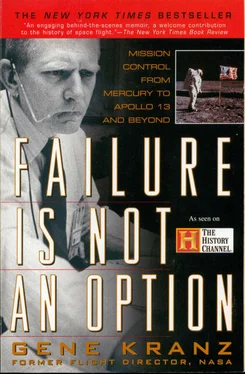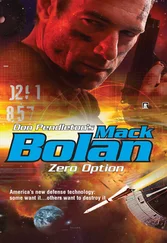The controllers assigned to the converted, aging merchant ships deployed first and had the toughest and loneliest assignments, wallowing haplessly in the ocean swells and occasionally hanging on for dear life during severe storms, fighting forty-five-foot waves and losing deck gear and communications antennas in the process.
The African sites were extremely risky. The young controllers found themselves in the middle of internal conflicts and were not warmly welcomed by many of the local citizenry. But the mission could not be done without them manning these remote and isolated sites. Throughout much of the mission, the remote tracking stations were the only sites in radio and telemetry communications with our crews. If communications were good with Mercury Control, the sites would report capsule and crew status to the MCC flight director and then receive instructions. If the communications were poor, as often was the case, they were out there on their own, improvising as they went along, dealing with often marginal technology and keeping their cool when things were falling apart.
A prime example was John Llewellyn, a stocky, square-jawed former Marine and an early member of the Space Task Group. He was chosen to lead the control team at the Zanzibar site, on the large island off the east coast of Africa in the Indian Ocean. John had fought through the First Marine Division’s bitter retreat from the Chosin Reservoir in Korea in December of 1950. After discharge he went to the College of William and Mary. A couple of years older than the rest of my controllers, John thrived in the crisis atmosphere of Zanzibar and drank many a toast with the Gordon Highlanders, the British unit stationed there during the period when, as British Prime Minister Harold Macmillan put it, “winds of change” were blowing through Africa.
This first deployment of a fully global network was a time of trial, the first test during a mission. Hundreds of people were learning to work together as a team for the first time and had had only a few weeks to put it all together. Things were particularly tense in Zanzibar, which was in turmoil. After a particularly bad day of rioting there the day before launch, I received a cryptic Teletype from the site: “MY TEAM WILL REMAIN AT SITE UNTIL TOMORROW’S TEST. WE HAVE THEM WHERE WE WANT THEM. SIGNED, LLEWELLYN.” It took me a while to realize that John’s team was surrounded. John was not going to take a chance that he could not get to the site the next day to support the mission. (Many of those who survived the hazards of remote site conditions would become the leaders in the Apollo program.)
After we accomplished a successful one-orbit mission, the remote site control teams returned to Langley to prepare for John Glenn’s orbital flight, scheduled for December 19. The final tune-up with the network and control teams was a planned three-orbit mission with a chimpanzee named Enos.
November 29, 1961, Mercury-Atlas 5
Walt Williams was the toughest leader I have ever known. A bit of a brawler, with the build of a barroom bouncer, he manned the console behind Kraft’s, surrounded by a blue haze from his chain-smoking. Walt had to be a tough customer—over the years he would have Presidents, members of Congress, the media, and prima donna astronauts to contend with. Because he had to be on top of everything, briefing him was a scary experience. God help you if you were unprepared. Here was a man who must have never slept. In the middle of a briefing he would start snoring, then grab a handful of his favorite Necco mints, chomp a few, and go back to sleep. Then, after the briefing, he would crisply summarize every key point in your presentation, isolate the important issues, and say, “Okay, let’s do it.”
On the crucial day when we were sending up Enos for the pre-Glenn shot, the launch countdown was ragged, with numerous holds for missed procedures and repairs to the data system. The telemetry was noisy, the glitches were visible on the console meters and recorders. I think Williams was moments away from calling it off when the Atlas finally lifted off. Then, after liftoff, Gus Grissom, at the CapCom console in Mercury Control, used his override switches to correct erroneous liftoff and booster engine shutdown data that had been fed into the Goddard computers by noisy data lines from the launch pad.
During the second orbit, several of the sites saw an increase in cabin temperatures and unexpected attitude control jet firings. The reports poured in by voice and Teletype as the hapless chimp sailed across Africa. The rate of fuel usage increased rapidly on the second orbit. The cabin temperature conditions were triggering an increase in Enos’s body temperature. With the capsule moving five miles closer to the deorbit point each second, decision time was rapidly approaching. Kraft knew that if he got Enos home alive, even if the mission was one orbit short, he could declare it a success and clear the way for Glenn’s launch. He didn’t dare try to imagine the headlines if Enos was left stranded and died in orbit.
When Chris couldn’t get a clear Go or NoGo from his systems monitor, he ordered the California site to go ahead with the retrofire. California then crisply reported, “Retro one fired… retro two fired… retro three. All fired and capsule attitudes were good.” Enos was coming home. After confirming that the retros had fired, Kraft turned to me, smiled, and said, “That’s a good show!” I knew then that Kraft would build a team, his team. The real-time role of the flight director and Mission Control had been demonstrated. For the first time, the control team had intervened in a deteriorating situation, made time-critical decisions, and saved the mission.
And now the team would have a new, permanent home: the decision had been made to relocate the controllers, the crews, and their families to what would become the permanent Manned Spacecraft Center in Houston. Gilruth’s staff and the logistics and engineering people would be the first to move in the new year. Then when they were in place, Kraft’s operations organization would begin relocating. I could not believe we would relocate the operations teams at the peak point of manned missions. But the launch pressure eased slightly when the agency backed off the December 19, 1961, date for John Glenn’s first American orbital flight. A postponement of up to five weeks would allow time for refurbishing and upgrading the launch pad and give the flight teams a needed rest. We had flown seven missions in 1961, weathered a few crises, put Shepard and Grissom into space, and brought them back alive. It was one hell of a first year for America’s manned space program, but we still had a long way to go. We wanted to be the leading rather than the trailing edge in spaceflight.
Trouble with hardware caused NASA to scrub Glenn’s flight, reset for January 27. We returned to Langley and landed in a blinding snow-storm. As we got off the aircraft, we were told to return to the Cape; the Atlas problem had been found. Air travel was out of the question, so we were driven to Richmond, Virginia, where we boarded a train and rode through the night to Orlando.
During their few hours at Langley, several of the controllers had picked up their wives and children. After getting the order to return, they had the wives and children frantically pack for the trip to the Cape. Our families met us at Langley to get on the buses that would take us to the train in Richmond. The wives and kids were assigned chair cars. The rest of us had no places reserved to sit or sleep, so we sat through the night in the dining car, playing poker or rehashing how we would resume our support to the launch countdown. By the time we got to Glenn’s mission, we started bringing families down to stay during the time we were deployed at the Cape. It worked out pretty well; we would work through the night and return to our motel and go to bed in the early morning hours. The wives would take the kids to the pool for the day while we slept. Then we would get up late in the afternoon, find some food, go to work, and the wives and kids would take our places in the motel rooms. The only trouble was that the per diem we got for deployment to the Cape was so meager that after our families left and we were just down there on our own we slept two guys to a room to make ends meet.
Читать дальше












